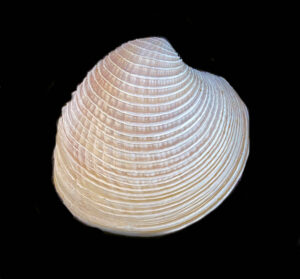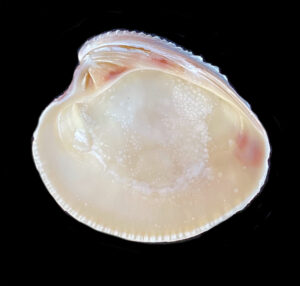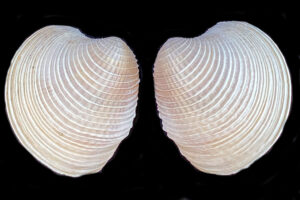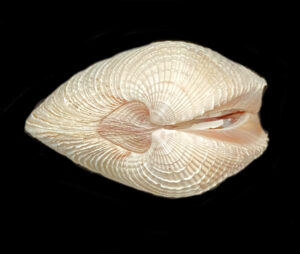California Venus Clam Shell, Chione californiensis



 California Venus Clam Shell, Chione californiensis. Shell collected off the beach at Punta Chivato, Baja California Sur, December 2021. Size: 6.6 cm (2.6 inches) x 5.8 cm (2.3 inches). Collection, photographs and identification courtesy of Colin Campbell, DVM, Punta Chivato, Baja California Sur.
California Venus Clam Shell, Chione californiensis. Shell collected off the beach at Punta Chivato, Baja California Sur, December 2021. Size: 6.6 cm (2.6 inches) x 5.8 cm (2.3 inches). Collection, photographs and identification courtesy of Colin Campbell, DVM, Punta Chivato, Baja California Sur.
The California Venus Clam, Chione californiensis (Broderip, 1835), is a bivalve mollusk that is a member of the Veneridae Family of Venus Clams. They are known in Mexico as almeja arenosa, almeja arrocera, almeja china, almeja marinera, almeja piedrera, almeja rosa, almeja roñosa, chirla, and venus mantecosa. There are three known subspecies: Chione californiensis durhami, Chione californiensis gealeyi and Chione californiensis peabodyi.
The California Venus Clam shell has a rounded triangular outline. The shells are fairly thick and moderately inflated, and the exterior is sculpted with high, thin, concentric ridges and very fine radial ribs. The exterior is white with irregular brown flecks in color and are tinged in blue inside that is strongest in the posterior region. The California Venus shell reach a maximum of 8.2 cm (3.2 inches) in length, and 7.8 cm (3.1 inches) in height.
The California Venus is found within sand and mud substrate from intertidally to depths up to of 70 m (230 feet). They are found in all Mexican waters of the Pacific.
The California Venus is easily confused with the Frilled Venus, Chione undatella or Almeja Roñosa del Golfo de Baja California (thinner and narrow spaced concentric ribs).
They are considered to be an important component of the diets of indigenous peoples of California.
Synonyms include Chione allisoni, Venus californiensis, Venus leucodon, and Venus nuttalli.